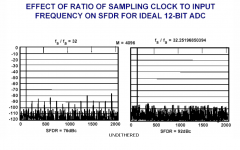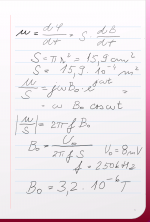If it's correlated with the signal, wouldn't it be distortion rather than noise?
No, the components are also non-harmonic.
Attachments
My PC uses Realtek HD Audio
Frank, there is no way to get correct sound with this, in case you ask for serious listening.
I've drawn a picture of my ground loop hypothesis to try to make it clearer.
It's consistent with all my observations and I've successfully used it to fix the sound of my amp. That doesn't necessarily mean it's the real explanation of what has been going on in my system though.
It's consistent with all my observations and I've successfully used it to fix the sound of my amp. That doesn't necessarily mean it's the real explanation of what has been going on in my system though.
Attachments
What is this picture supposed to explain? Aren't you just saying that interference from ground loops is bad?
For serious computer-based listening on Windows, I would recommend a pro-audio type soundcard with an ASIO driver, and foobar2000 as the player. You don't have to use the ASIO driver. It can be inconvenient as it often takes exclusive control of the card and no other applications can make sound. The mere fact that an ASIO driver exists proves that the soundcard maker is serious. 🙂
Onboard audio is a minefield. The analog I/O often suffers from ground loops in desktop machines. Even if you use the SPDIF digital output on your motherboard, many chipsets (including said Realtek iirc) resample it to 48kHz in hardware with a cheap and nasty algorithm. If you have one of these and still want to use it, I recommend looking for player software with a high quality resampling algorithm and setting it to output everything at 48kHz.
For serious computer-based listening on Windows, I would recommend a pro-audio type soundcard with an ASIO driver, and foobar2000 as the player. You don't have to use the ASIO driver. It can be inconvenient as it often takes exclusive control of the card and no other applications can make sound. The mere fact that an ASIO driver exists proves that the soundcard maker is serious. 🙂
Onboard audio is a minefield. The analog I/O often suffers from ground loops in desktop machines. Even if you use the SPDIF digital output on your motherboard, many chipsets (including said Realtek iirc) resample it to 48kHz in hardware with a cheap and nasty algorithm. If you have one of these and still want to use it, I recommend looking for player software with a high quality resampling algorithm and setting it to output everything at 48kHz.
Last edited:
The tones in your 'Threshold' files are audible Karl, but all that accompanying digital noise is horrible 😀. There is nothing worse than digital, well defined noise, signal correlated 😀😀
Thanks. I tried your sigtest files and all three are audible on the laptop (and no noise 🙂) For the -110db I had to turn the graphic eq up to make it audible. Very clear and distinct.
What is this picture supposed to explain? Aren't you just saying that interference from ground loops is bad?
Yes. But not because of the visible low order mains harmonics but instead because of the higher frequency noise in the part of the spectrum to which the ear is most sensitive which masks the detail of the audio in the regions where the ear is less sensitive.
It's an explanation of why 3kHz interference at -100dB is maybe more significant than it looks.
That's not at all how masking works. A louder signal will mask a quieter one at a similar frequency. Low-level noise in the midrange can't somehow sneak around and mask louder signals at completely different frequencies.
Masking means that the -100dB signal at 3kHz is less significant than you think, not more.
Not that I care since I have no spurious tones like that in my system anyway. 🙂
Masking means that the -100dB signal at 3kHz is less significant than you think, not more.
Not that I care since I have no spurious tones like that in my system anyway. 🙂
Mains harmonics is not always indicative of ground loop; much more often it is indicative of power supply rejection of amplifier topology. Super high power supply rejection topologies can run on garbage power supply.
Mains harmonics is not always indicative of ground loop; much more often it is indicative of power supply rejection of amplifier topology. Super high power supply rejection topologies can run on garbage power supply.
Yes, agree that you can see mains hum from power supply with harmonics that drop off quickly. My tube amp is like this. It sounds OK.
Low-level noise in the midrange can't somehow sneak around and mask louder signals at completely different frequencies.
Try a -100dBFS 3kHz tone vs a -60dBFS 10kHz tone.
I tried this using the two-tone generator in ARTA, set for 10kHz and 3kHz at a 100:1 ratio (so the 10kHz is 40dB louder)
I can hear both tones at once easily. The 10kHz tone is annoyingly loud, but I can still tell whether the 3kHz one is present or absent.
This is what you would expect as the two tones are in different critical bands.
I can hear both tones at once easily. The 10kHz tone is annoyingly loud, but I can still tell whether the 3kHz one is present or absent.
This is what you would expect as the two tones are in different critical bands.
Last edited:
I tried this using the generator in ARTA, set for 10kHz and 3kHz at a 100:1 ratio (so the 10kHz is 40dB louder)
I can hear both tones at once easily. The 10kHz tone is annoyingly loud, but I can still tell whether the 3kHz one is present or absent.
That's interesting. Last time I tried 2kHz and 10kHz and the 10kHz tone was inaudible.
I was just preparing the 3kHz and 10kHz test but haven't done it myself yet.
I wonder if the masking is more significant when the higher frequency is a harmonic and so reinforces the perception of the lower frequency...
Why don't you try the 2kHz and 10kHz version as well and compare the results.
Also interesting to try to find out how much louder the 10kHz tone has to be before you can't hear the interference from the 3kHz or 2kHz tone.
Last edited:
I tested both again and at low volumes the 2 or 3 kHz tone at 40dB below the 10kHz tone can completely mask the 10kHz tone. At higher volumes the 10kHz tone becomes audible over the 2 or 3kHz tone but the 2 or 3kHz tone is still audible as you describe.
I think the 2kHz tone may be better at masking the 10kHz tone than the 3kHz tone. i.e. higher volume required before the 10kHz tone becomes audible.
I think the 2kHz tone may be better at masking the 10kHz tone than the 3kHz tone. i.e. higher volume required before the 10kHz tone becomes audible.
If anything I would expect the opposite. According to Fletcher-Munson, the threshold of hearing is only 15dB higher at 10kHz than 3kHz. So if the 3kHz tone were on the threshold of hearing, the 10kHz one should be (40-15) = 25dB above it.
It follows that the 10kHz tone should become audible first as the volume is increased, and if anything it should mask the 3kHz one, not the other way round.
It follows that the 10kHz tone should become audible first as the volume is increased, and if anything it should mask the 3kHz one, not the other way round.
If anything I would expect the opposite. According to Fletcher-Munson, the threshold of hearing is only 15dB higher at 10kHz than 3kHz. So if the 3kHz tone were on the threshold of hearing, the 10kHz one should be (40-15) = 25dB above it.
It follows that the 10kHz tone should become audible first as the volume is increased, and if anything it should mask the 3kHz one, not the other way round.
Try it. On my system, the low frequency tone 40dB below is clearly audible first.
I don't know if that's my ears or my system or something else but I can hear the low frequency tone first then, as I raise the volume, the high frequency tone appears (and eventually gets annoyingly loud).
I think the most likely explanation is that you have 25dB or more of high frequency hearing loss.
Fletcher-Munson is known to be very inaccurate. You'll find practically all more modern 'threshold' curves show much less at HF and more at 3-4kHz.If anything I would expect the opposite. According to Fletcher-Munson, the threshold of hearing is only 15dB higher at 10kHz than 3kHz. So if the 3kHz tone were on the threshold of hearing, the 10kHz one should be (40-15) = 25dB above it.
It follows that the 10kHz tone should become audible first as the volume is increased, and if anything it should mask the 3kHz one, not the other way round.
Much less what? Are you saying the ear is less sensitive at HF vs. 3kHz than Fletcher-Munson thought, or more?
If less, maybe the explanation is that noise-induced hearing loss has got worse since the 1940s.
If less, maybe the explanation is that noise-induced hearing loss has got worse since the 1940s.
- Status
- Not open for further replies.
- Home
- General Interest
- Everything Else
- Based on sonics... which do you prefer ?


